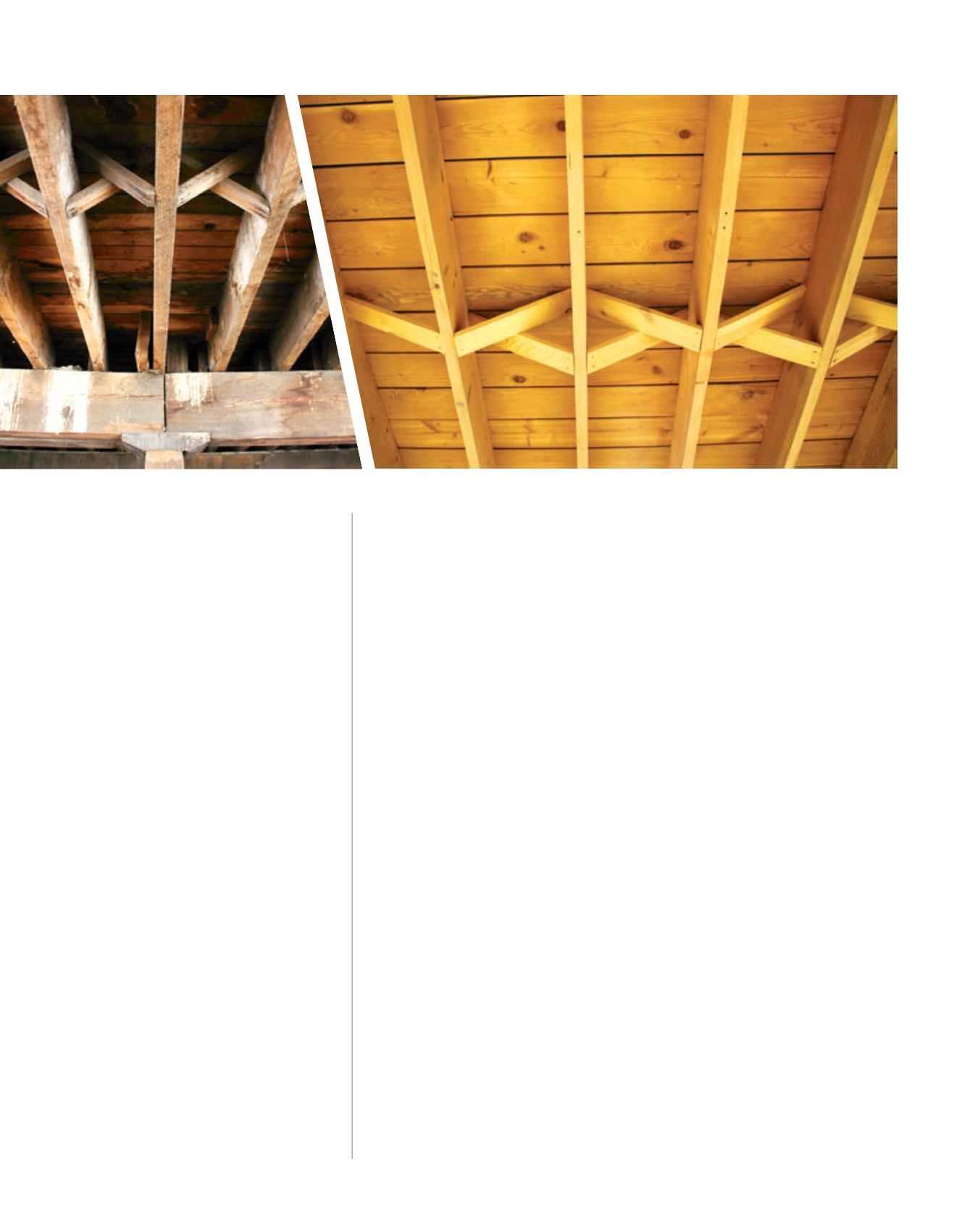
88
/ BUILDING DIALOGUE / SEPTEMBER 2016
/ Full STEAM Ahead on Abandoned Zuni Warehouse /
first phase of the brick repair was to tighten up the parapet and the top 5
feet of walls on the east elevation,” said Don Gillmore, president of Rocky
Mountain Building Restoration. “Large areas on the south end of the building
were missing quite a bit of mortar from the mortar joints and were also tuck
pointed. The parapets had missing brick, loose brick and missing mortar and
was in danger of falling apart. Used bricks were acquired which matched the
brick on the different buildings and were installed where needed.”
WCG teamed with Enviro-Tech Solutions during the nine-week process
that cleaned up the historic brick and timbers inside the 65,000-square-
foot warehouse at 1401 Zuni. Two different blasting processes were utilized
to clean and restore various surfaces inside the abandoned warehouse. For
the metal beams and wooden surfaces, abrasive blasting was used with recy-
cled crushed glass as the blasting medium. On the brick surfaces, the metal
press and the pump, Enviro-Tech Solutions employed a technique called soda
blasting, during which sodium bicarbonate was applied. Over 170,000 square
feet of wooden surfaces and 30,000 square feet of brick surfaces was blasted
and cleaned.
Reviving the physical character of 1401 Zuni highlights the building’s and
the site’s long history. From the late 1800s, the site was booming with ener-
gy from a variety of industrial users. Historical resources indicate that there
appeared to be a former tannery on site. In the 1890s, the land featured a
main building with a hair rope walk and two smaller buildings consisting
of straw storage and lumber. In the early 1900s, the property was developed
between West Colfax Avenue and West 14th Avenue with approximately 22
dwellings, three stores, one school, a congregation, a print shop, Rosenbraums
Bathhouse, and hay and feed storage. The Johnson and Bremer Soap Factory
was located on the southeast side of the property, along the intersection of
West 14th Avenue and South First (now Zuni Street.) Since then, the property’s
uses evolved and included coal and oil companies, Congregation Zera Abra-
ham and ceremonial bathhouse, rag baling facilities and others. Beginning
in the 1940s, discards from Goodwill and other thrift stores were recycled
using three different baling machines. At the height, the machines processed
1 million pounds of material per month and produced 40 bales per day. One
of the rag balers still sits in the warehouse and will be one of the focal points
when entering the building.
“Redeveloping this site with White Construction Group is an exciting pro-
cess,” said Susan Powers, president of Urban Ventures LLC. “We are breath-
ing new life into existing buildings, honoring their character while adapting
them for new uses.”
\\
OPENING ART:
Rendering depicts STEAM on
the Platte, including a formerly
abandoned warehouse on Zuni Street.
Rendering courtesy Wenk Associates
ABOVE LEFT:
100-year-old timbers before
sodablasting
ABOVE RIGHT:
100-year-old timbers after
sodablasting
Photo courtesy James Florio


